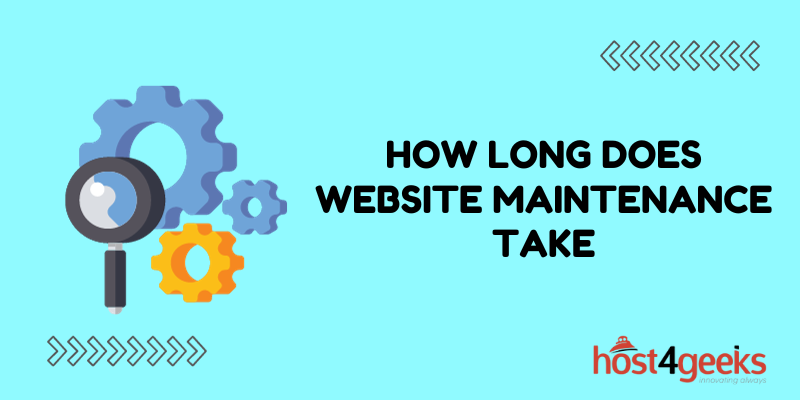Navigating the world of website ownership comes with an array of responsibilities, and among the most crucial is website maintenance. From routine updates to addressing technical glitches, the question of “How long does website maintenance take” is one that website owners often ponder.
In this fast-paced digital landscape, where user experience reigns supreme, understanding the time investment required for effective website maintenance is paramount.
Whether you’re a seasoned webmaster or just stepping into the realm of online presence, delving into the various factors influencing the duration of website maintenance will provide you with valuable insights for ensuring the seamless performance of your virtual storefront.
So, join us as we uncover the intricacies behind this vital facet of online success and equip you with the knowledge needed to keep your digital domain running like a well-oiled machine.
Understanding Website Maintenance and How Long It Takes
Website maintenance encompasses a series of ongoing tasks and activities to ensure a website’s smooth functioning, security, and overall performance.
It goes beyond the initial website development phase and involves regular updates, bug fixes, content refreshments, and more. The duration of website maintenance can vary widely based on several factors that we’ll explore in detail.
Factors Affecting Website Maintenance Duration
1. Complexity of the Website
The complexity of your website is a major determinant of the time required for maintenance. A simple, static website might require less frequent updates compared to a dynamic e-commerce platform with numerous features and integrations. The latter demands a more substantial time investment due to the intricate nature of its components.
2. Frequency of Updates
Regular updates are pivotal to a website’s security and performance. These updates include software patches, plugin updates, security enhancements, and content updates. Websites that receive frequent updates generally require more maintenance time to ensure they are always up-to-date and secure.
3. Size of the Website
The size of your website, including the number of pages and multimedia elements, directly impacts maintenance duration. A larger website necessitates more thorough testing and validation to ensure that all pages and features are functioning correctly after updates.
4. Content Management
Quality and up-to-date content are fundamental for engaging visitors and improving search engine rankings. The time required for content maintenance depends on the frequency of content updates, including blog posts, news articles, product descriptions, and images.
5. Technical Improvements
Implementing technical improvements, such as optimizing website speed, enhancing user experience, and addressing mobile responsiveness, requires dedicated maintenance time. These improvements contribute to better user engagement and can positively impact your search engine ranking.
6. Security Measures
In an era of increasing cyber threats, prioritizing website security is paramount. Regular security audits, malware scans, and implementing SSL certificates demand a significant portion of maintenance time. However, these measures are essential to safeguard your website and user data.
7. Backup and Recovery Plans
Unforeseen events can lead to website crashes or data loss. To mitigate these risks, setting up robust backup and recovery plans is crucial. Regularly testing these plans to ensure they work effectively adds to the maintenance duration.
8. SEO Optimization
Search engine optimization (SEO) is a continuous effort that requires consistent attention. Regularly optimizing meta tags, and keywords, and monitoring search engine algorithms can contribute to higher search engine rankings and organic traffic.
Optimizing Your Website Maintenance Process
Efficiency is key when it comes to website maintenance. To optimize the process and reduce the time required, consider the following strategies:
- Prioritize Tasks: Identify critical tasks that require immediate attention and allocate resources accordingly.
- Automation: Utilize automation tools to streamline repetitive tasks, such as software updates and backups.
- Outsourcing: Consider outsourcing specific tasks to experts, freeing up your time to focus on core activities.
- Regular Audits: Conduct regular audits to identify bottlenecks and areas for improvement in your maintenance workflow.
By implementing these strategies, you can significantly enhance the efficiency of your website maintenance process and dedicate more time to strategic initiatives.
Conclusion
In conclusion, the duration of website maintenance varies based on multiple factors, each contributing to the overall workload.
The complexity of your website, frequency of updates, website size, content management, technical improvements, security measures, backup plans, and SEO optimization collectively determine the time required for maintenance.
By understanding these factors and adopting optimization strategies, you can ensure that your website remains secure, up-to-date, and optimized for search engines.
